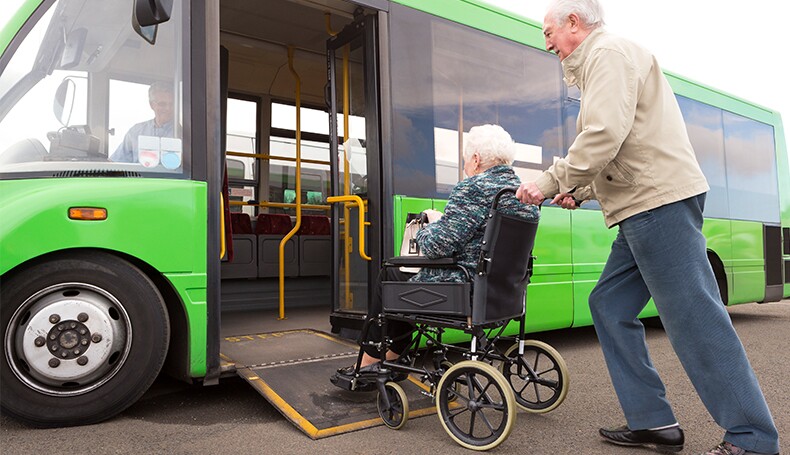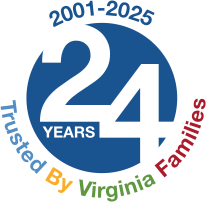
I have taught the National Transit Institute mobility management class more than 100 times during the past 15 years. This summer, I co-authored an Emerging Innovations paper on mobility managers for the AARP Public Policy Institute’s suite of resources related to its Long-Term Services and Supports (LTSS) State Scorecard. The Scorecard identifies transportation as one of the biggest obstacles for people with LTSS needs who do not drive but want to live at home and in the community. Mobility managers can help overcome this obstacle.
People often ask me: What is a mobility manager, and why am I an educator for mobility managers? Here are my answers.
What Is a Mobility Manager?
Mobility managers are transportation coordinators for older adults, people with disabilities, veterans, and other members of the riding public. When I teach mobility management, I always tell the students if they remember only one thing from the class, remember this: It’s all about the customer. Mobility management is all about serving the needs of the individual. Matching people with resources (coordination) is one of the biggest functions.
Mobility managers can help people “find a ride” by connecting them to transportation options in their communities. At the system level, they can also help by participating in coordinated human service public transportation planning and other related efforts. They can work for area agencies on aging, transportation departments, veteran’s medical facilities, local nonprofits, and other employers.
In an effort to encourage investment in mobility managers, the U.S. Department of Transportation offers communities broad flexibility to tap federal funding sources
What Are Some Specifics Concerning How Mobility Managers Create Transportation Solutions?
Here is an urban example and a rural one. In Houston, Texas, a mobility manager identified that the cost of an Americans with Disabilities Act (ADA) van trip was around $28 compared to the taxi voucher program’s average cost of $4.90. Houston Metro had a cap on the number of voucher rides with local taxi companies, which limited the savings. Thanks to the mobility manager identifying the cost savings, that program has expanded.
My best example of a rural program resulting from mobility management comes from Dodgeville, Wisconsin. The area’s transportation options are extremely limited, prompting my friend, Jeff Segebrecht, a Wisconsin certified mobility manager, to start a car loan program for individuals who would never qualify for such a loan otherwise. The program has now been operating for over 10 years.
My friend has also built on the program’s success. After the program began, he realized that when you buy used cars, major parts can fail (engines and transmissions, for example). In response to that issue, he started a vehicle repair program that works the same way the car purchase program works; participants can receive up to $2,500 in loans for major repairs.
Illustrating transportation’s importance in so many key aspects of life, the program has even had a measurable impact in the area of employment. Jeff’s tracking of program participants has shown that they typically start in minimum-wage jobs but have consistently progressed to better paying jobs with health benefits.
Why is Mobility Management My Life’s Work?
One consistent theme in the field of transportation is that there is never enough money. It is important to find ways to meet expanding demand with little-to-no increase in funding. Mobility management is one of the answers.
For too long, big transit systems have focused on assets such as vehicles. With Uber and Lyft and other on-demand transportation services as well as advances in technology, the focus is shifting to customers’ needs. The bottom line: mobility managers are a transportation resource with untapped potential.
As people are living longer and outliving their driving years, we must find ways to improve mobility. The problem is that very few people know about mobility managers, while many communities are unaware of federal funding available to pay for them. That is why I am proud to have co-authored the AARP report and this blog—because we need to raise awareness.
---------- Written by James J. McLary, September 9, 2019. James McLary is a veteran mobility management advocate. He managed the Madison, Wisconsin transit system and started one of the first specialized services for people with disabilities. He has served on many transportation boards and committees. He was also an adjunct professor at Indiana University, teaching public transportation classes. He designed the first mobility management course for the National Transit Institute, where he is still an enthusiastic instructor.
AARP was founded in 1958 and has over 38 million members. It is a nonprofit, nonpartisan organization for people over the age of 50. AARP is well-known for its advocacy efforts, providing its members with important information, products and services that enhance quality of life as they age. They also promote community service and keep members and the public informed on issues relating to the over 50 age group.
